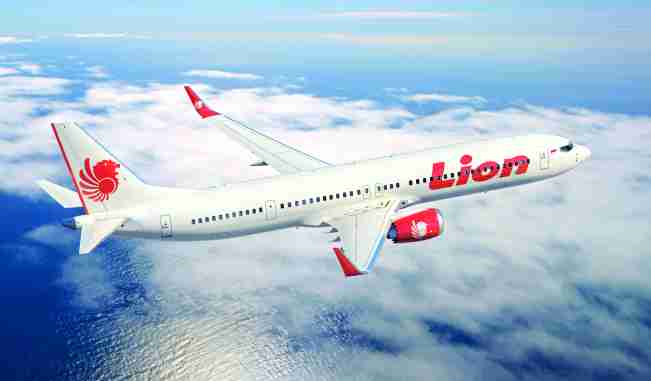28 November 2018
NTSC Indonesia published a preliminary report on the Lion Air B737 MAX 8
accident of October 29, showing the flight crew was struggling to maintain
control after takeoff.
Lion Air flight 610 crashed into the sea shortly after
takeoff from Jakarta-Soekarno-Hatta International Airport, Indonesia, killing
all 189 on board.
According to the preliminary report, the Aircraft Flight Maintenance Log
(AFML) recorded that since October 26 until the occurrence date several problems
occurred related to airspeed and altitude flags that appeared on the captain's
(left) Primary Flight Display (PFD) on three occasions, SPEED TRIM FAIL light
illumination and MACH TRIM FAIL light illumination that occurred twice.
Several attempts were made by engineers to rectify these issues. The day before the accident the Angle of Attack (AoA) sensor was replaced by engineers at Denpasar Airport.
The flight from Denpasar to Jakarta was the flight prior to JT610. During
rotation, the stick shaker activated and an IAS DISAGREE warning showed on the
captain's PFD at 400 feet. The flight was handled by the copilot as it was
determined that the captain's PFD was unreliable. The flight crew moved the STAB
TRIM (stabilizer trim) switch to CUT OUT due to three automatic nosedown trim
occurrences. The crew worked checklists and continued the flight to
CGK.
Based on the crew's entry in the AFML, the engineer at Jakarta flushed the
left Pitot Air Data Module (ADM) and static ADM to rectify the reported IAS and
ALT disagree and cleaned the electrical connector plug of the elevator feel
computer. The aircraft was subsequently released to carry out flight
JT610.
During takeoff from Jakarta, the DFDR recorded a difference between left
and right Angle of Attack of about 20° which continued until the end of
the recording. During rotation of the aircraft, the left control column stick
shaker activated and continued for most of the flight.
After the flaps were retracted, the FDR recorded automatic aircraft nose
down (AND) trim for 10 seconds followed by flight crew commanded aircraft nose
up (ANU) trim. Automatic AND trim briefly stopped when the flaps were
temporarily extended to 5.
In their communications with air traffic control, the flight crew asked the
controller to confirm the altitude of the aircraft and later also asked the
speed as shown on the controller radar display. The copilot reported
experiencing a "flight control problem" and that they were flying the aircraft
manually.
Last radio contact was at 06:31 local time when the captain requested the
arrival controller to block altitude 3,000 feet above and below for traffic
avoidance. The controller asked what altitude the pilot wanted, to which the
captain responded "five thou". The controller approved the pilot request. The
FDR stopped recording within twenty seconds of the pilot's response.
More information:

LION AIR CULTURE WAS BASED ON SHORTCUTS CLAIMS FORMER SAFETY MANAGER

A safety manager who was commissioned to look into Lion Air's operations between 2009 and 2011 paints a worrying picture of a "bad approach to safety" with shortcuts at all levels.
The former 737 pilot and now safety consultant, was brought in as Lion Air's safety manager from 2009 to 2011 on orders from insurance companies, told AirlineRatings.com that the airline had "an average of one major engineering issue every three days, despite most of its fleet being, new."
"You can buy all the latest-generation planes, but it will all be in vain if you don't have systems in place that prioritize safety," he said.
For instance, the pilot said pilots were working far too many hours."
"What I saw was an airline from the very top down, whose motto was saving money and they spent the minimum on pilot training, salaries, and management," he said.
"It's easy to blame people but it was the system."
And in an extraordinary claim, the former safety manager said the airline "sent pilots for training that did not even have their instrument rating" which indicated a lack of understanding by management of what was required.
The pilot added that if an aircraft had a broken part preventing it from being dispatched because it exceeds the Minimum Equipment List standard the engineers would simply swap the broken part with another aircraft. (The M.E.L. is an industry standard set by the manufacturer that outlines how many systems must be operating to dispatch an aircraft. Aircraft have multiple backups and aircraft can be dispatched with one not operating because of the redundancy built in.)
The safety manager also told Airlineratings.com that many aircraft incidents were covered up. "Many were kept quiet."
"They also used to buy off air traffic controllers with free tickets to give Lion Air flights priority."
However, since 2011, Lion Air has apparently taken stock and was able to obtain a lifting of a ban to fly to Europe and the USA and then was able to achieve the International Air Transport Association Operational Safety Audit (IOSA).
But after the loss of Lion Air Flight 610 on October 29, many safety consultants are asking if anything has really changed.
While the investigation is still in its early stages, the facts that have emerged paint an alarmingly similar picture to the airline that the safety manager found in 2009.
Lion Air has denied the company cut corners and said the company's twin priorities were growth and safety.



Ingen kommentarer:
Legg inn en kommentar
Merk: Bare medlemmer av denne bloggen kan legge inn en kommentar.